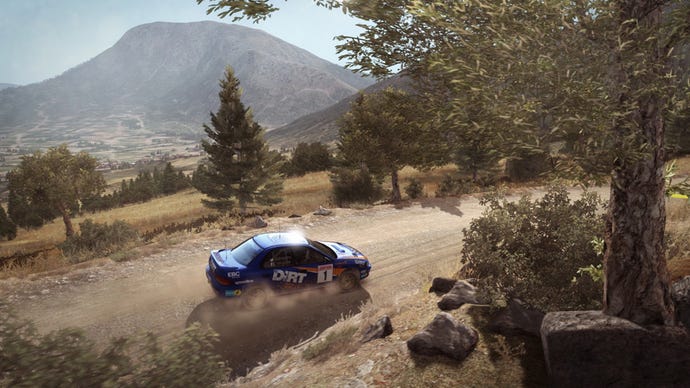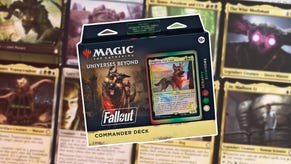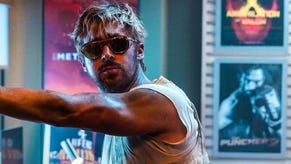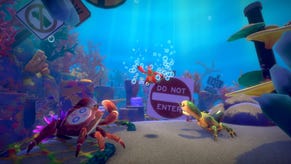Inside DiRT Rally's Development
Paul Coleman, lead designer of DiRT Rally, discusses the challenges of making this hardcore rallying simulation.
This article first appeared on USgamer, a partner publication of VG247. Some content, such as this article, has been migrated to VG247 for posterity after USgamer's closure - but it has not been edited or further vetted by the VG247 team.
Sitting down with Paul Coleman, lead designer of DiRT Rally, I'm curious to know how the rally simulation got started.
"We started in 2012 with a small prototype team of five of us, and the premise was to produce the most authentic rally game ever made. It's something our community had been asking us to do."
"We started running some of the cars that we had in our previous game down the real stages we'd recreated, and our old physics just couldn't cope with it. The technical ability that the cars needed just wasn't there. It became quite frustrating to drive those old cars down those stages. So we set about stripping back the entire simulation engine and trying to work out what we could do to make the cars drive closer to the real thing."
"That was a long process. We actually got a rally driver into the studio full-time, and he worked with us for a year. He came in as a project manager, but we were also using him as a test driver as well. That gave us constant feedback, and that kind of iteration is something we've never really had before, and I'd argue that most studios don't have."
"Having got that prototype shaped into something that we were happy with, the next step was to get the game out there. But from a business perspective, the guys at the top of the company were worried that the racing genre had shrunk, and we were making a rally game which is a subsection of that – and it was a simulation, which potentially reduces the number of people who would want to play it, so we were making a niche of a niche. They weren't 100% convinced we should take it into full production on consoles and PC, so we took the decision to take the early access route on PC, and released the game in April of last year."
"Fortunately the fans seemed to really enjoy it, and they got on with the direction we'd taken. They loved the more authentic approach, and that let us put the game in their hands and start asking them what more did they want, what they liked and didn't like. Over the course of nine months, we tweaked a broad spectrum of things, from the physics of the cars to the force feedback for steering wheels. In June, based on the success of the PC version and the reaction users were having to it, the business decided to release DiRT Rally on consoles. So we had a small team that broke out and started doing that work while we finished the early access on PC, which ended in December. Since then, everyone's been focused on polishing the console version for its release in April of this year."
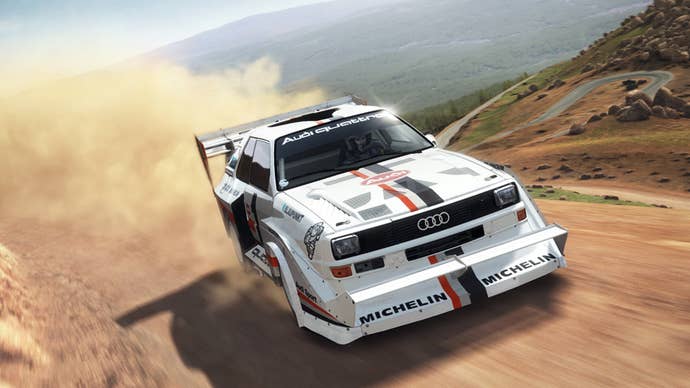
"On PS4, DiRT Rally runs solidly at 1080p, 60 frames per second, and on Xbox One, most of the time it's 1080p at 60 frames per second, but we occasionally dynamically switch down to 900 when things get super-intense. All of the stuff we learned about force feedback has been carried over to consoles. I'm super happy with how things have gone. It's really exciting that the community got so involved with it, and were so passionate about it, and we were able to react to the stuff they were asking us to react to."
"Because we set out to represent rallying as authentically as possible, a lot of the stuff like the co-driver calls are more in-depth than they've ever had to be before, because the detail of the stages are that much more intense, and you need to know when it's important not to cut corners and stuff like that. We've put a load of video guides into the game, which is something we didn't have in the PC version. The guides aren't step-by-step tutorials as such – they're more like the theory of driving rally cars, the things you need to think about, and the kind of mindset that you need to have. I'm hoping they're really useful for players who are coming into the sport and who might know about racing games and know about how to drive a car quickly around a track, but maybe are struggling to transition to rallying. Driving a car down a narrow goat track in Greece is tough. Those kinds of roads aren't designed to be raced on, but that's a key part of rallying – it's taking a crew of a driver and co-driver and a vehicle down that narrow, inhospitable road and trying to achieve as fast a time as possible."
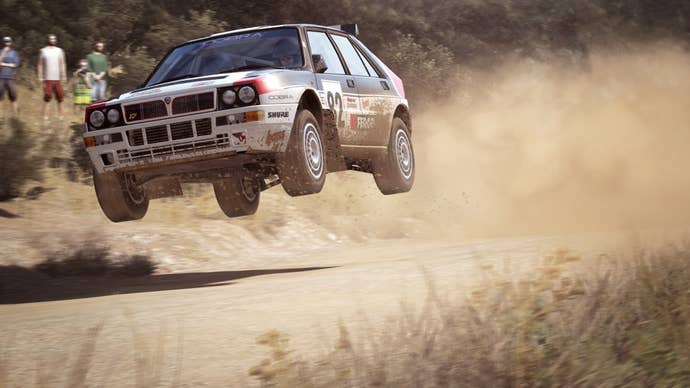
How do you balance between the difficulty of playing a simulation and making the game user friendly?
"Because it is a simulation, you're never going to get it 100% accurate, I think it's fair to say. If we could, we would have done. When you see professional simulators that most sports teams use, they put an entire server room behind simulating what it's like driving a car. They don't need to worry about looks, and wrapping it up in a high production value package that a gamer would want to buy, so there are compromises we have to make to ensure that the game looks as good as it does, which you could say is to the detriment of the simulation model underneath. But I would say that we're closer than we've ever got before to representing what it's like to drive rally cars off-road. I think this is the most advanced rally simulation out there, and I think the feeling, that sense of shifting the car's weight around, the car digging into the gravel surface, sweeping the loose stuff away and getting to the grippy surface beneath are all important factors that we modeled in our simulation. Getting the surface right was the most important thing, then followed by the tire model. I think it feels great as a result."
"The fact that there are rally drivers out there who are buying the game and using it as a training tool to me says that we've got something right. From a gamer perspective, it's a hard game, but it should never feel like it's being unfair. You should always feel like you can improve. When players first play it, their first stage time may be very, very long and horrible. But the next time they try it, they already cut 30 seconds or even a minute off their times, and then it's all about incrementally improving and improving. And that's what it's all about – your willingness to continue to improve, and feel like the challenge is always evolving as you play through it."
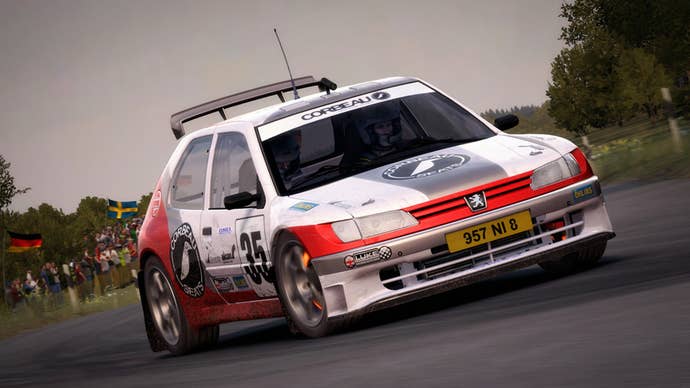
How is the game structured?
"What we've done is set up a series of championships that increase in difficulty and challenge as you go, and it's up to you to find your own position in that. There's a promotion and relegation system where you can get promoted to new championships, and your rewards get a little better. This lets you find your opponents and your pace, sit within that tier until you're ready to move on, and while you're doing that you earn cash that lets you hire better crew members so you can repair your cars more efficiently, and buy new cars."
"The way we've structured the car progression is based on rally history. You start with a 60's rally Mini and it goes all the way through to contemporary rally cars, with pretty much everything in between, including Group B monsters."
"We've tried to keep the career as simple as possible to make the real star of the game the way it plays, and the way the cars feel. There's a whole online side of things as well. We're doing online events that last a day, a week or a month – you can take part in those when you're ready, since participation is optional. For real PvP, we've got the rallycross side of things that allows you to race door-to-door with four other players across three different tracks. Obviously, three tracks isn't a huge amount, but it's the start of a relationship with FIA, and hopefully we can continue to develop that in the future."
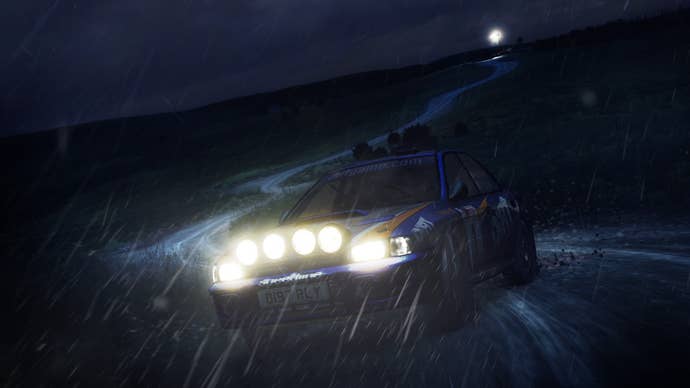
What about the rally stages themselves?
"We have six rally locations, which have two unique stretches of nine kilometers each, which we chunk up into stages. They're all based on real rally stages from around the world. Sometimes they're a full stage, and sometimes we've had to take the best nine or twelve kilometers from within a stage and do that. We go out to a location and research them with a tape measure – we're quite old-fashioned like that – and we also take tens of thousands of photos to capture everything from the road surface through the flora and fauna to the overall landscape. We bring that back to the studio with the stage maps, and we compile that into the closest thing we can get to what is actually there in real life. Same process for the circuits. We also have Pike's Peak for the hillclimb side of the game."
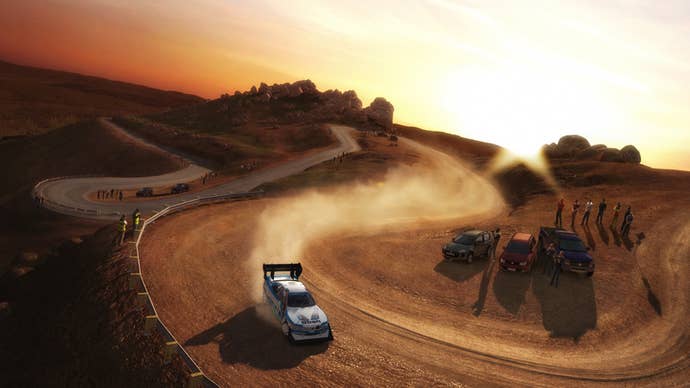
Since DiRT Rally includes rallycross, rallying and hillclimbing, I assume there are different cars in the game that suit those different kinds of events.
"Yes. We have 43 cars in the game. There are four hillclimb cars, ten rallycross cars, and the rest of them are rally cars from every decade since the 60's. In the 70's class we've got quite a few favorites in there, like the Lancia Stratos. In the 80's we have rear-wheel drive class including the Renault 5 Turbo, which is new to the console version, as well as old favorites from the 80's Touring era. Of course, we have Group B, which is one of the most iconic classes, as well as rear-wheel drive class, including the Opel Manta and the Lancia 037. For the 90's we managed to get the Colin McRae livery on the Subaru, which is the first time we've ever done that. We also have F2 cars - high-performance front-wheel drive cars that are the forgotten class of rallying from the late 90's. I thought it was cool to bring them back in. Then we have the modern four wheel drive class – not top end, but decent spec that a lot of rally fans aspire to drive. We also have the Colin McRae Ford Focus and the Richard Burns Subaru Impreza, which I thought was really important to be able to race one another. They're also two cars that came from the most technically advanced era of rallying where they had all the electronic devices on them – the modern rally cars have stripped out all of that technology, and the cars are a lot simpler. From the 10's we have the Mini, VW Polo, and Hyundai. So we’ve got everything from 1963 to 2016. From a rallycross perspective we have a new entry-level Mini series, a FWD super 1600 hatchback intermediate series, as well as supercars, which is the FIA licensed championship."
"I'm really pleased that we've been able to turn the game into a full package that players are able to graduate from the early stages through to the top end cars. It's a colorful spectrum of cars that's my love letter to rallying as a sport."

How does the damage modeling work?
"The endurance aspect of rallying is integral to its authenticity, and we allow the cars to deteriorate, so it's not just a case of you've hit a tree and you take damage – you take wear and tear as you drive around. It's not as close to realistic as perhaps I'd like it, and some of our fans have been asking us to put in a more hardcore mode which is more in tune with the realism, but what I wanted us to do from a design perspective is to make sure that players got the sense of carrying on regardless, rather than just reaching for the reset button and starting the stage again. Rallying is a lot about keeping calm and carrying on, it's not so much about setting the best time – it's about dealing with adversity and seeing who comes out on top at the end of the day. That said, we have full mechanical damage modeling, and that's represented visually. You have service intervals every two stages so you can make repairs."
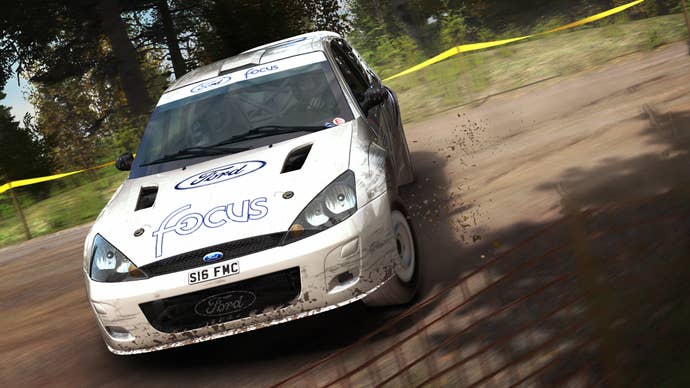
Since DiRT Rally is a simulation, does the game feature any assists?
"Anything you can get in a normal road car is the way we've done it. So it's on-car assists rather than external things like magically helping turn the car or brake: ABS, traction control, and we have a stability control system that emulates how stability controls work within performance cars where it's essentially touching the brakes and trying to keep the car under control a bit more. Stability control doesn't work that well on gravel, and you don't get the feeling of really chucking the car around, but ABS is hugely helpful on gravel stages. We've put everything on a scale, so you can find the right balance for your driving style. Everything is there for the user to tweak."
How did you go about modeling the cars?
"For the historical stuff, there was quite a lot of information out there that we could get together, but when we do the research for the cars, we ask the owners to send us as much information as possible. Because a lot of them are super-nerdy about their cars, they have a lot of additional fact sheets that they got from the teams that they bought the cars from, and that basically has given us a lot of confidence that the numbers we're putting into our vehicle editor are accurate. We also read reports on how the cars drove, and what the drivers said about them, and we try to instill that character into them too. So we start with data, and then refine it to try to get the character of the car right."
"Generally, it's easier to do it with old cars than it is with modern cars, because the modern teams are quite precious about their setups, and they won't give you too much information because it allows them to be competitive. But we have had a few behind-closed-doors chats with the rallycross teams to get some information from them about what makes their cars different from other teams, and they're fine with talking to us as long as we don't say anything to the other teams."
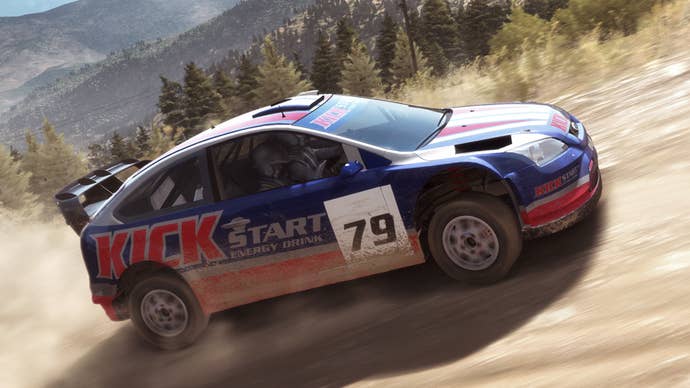
Are the cars set up differently for Rallycross?
"Yes. Because they run on mixed surfaces that are half tarmac and half gravel, they have to cope with both surfaces. With rally cars, we just use a gravel setup because we know it's going to be on that surface most of the time. When you do move to a tarmac stage, we'll change the setup of the car to suit that."
"For Rallycross, the cars need to be more balanced. But actually, between the different teams, even though the cars all look like two-door European hatchbacks and they all look like they should be the same, they have 600 horsepower, and each team has a different philosophy about how they get the best performance out of it. So they have different types of differentials and suspension setups, and all of that are things we learned as we were making DiRT Rally, and we had to revamp our simulation engine to represent them properly."
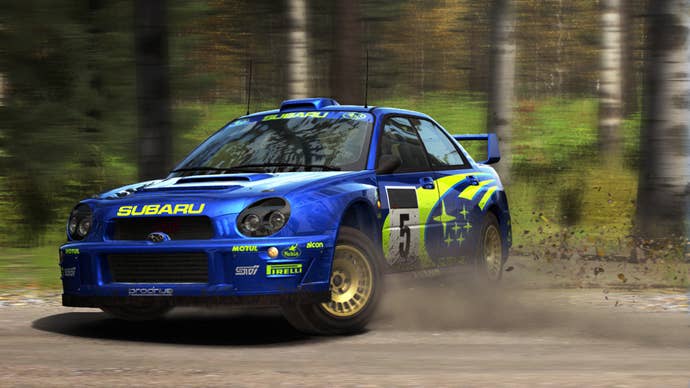
DiRT Rally's roads seem to be thinner than in previous iterations of the game. Is that true, or are my eyes deceiving me?
"In the past when we made our rally games, we always used to make our tracks wider, and then found that we used to have to make our cars faster because the game would otherwise be boring. So the first thing we did with this game was figure out how we could make it more correct. And so we reduced the road width to the right amount, and we found we could drive the cars at a more sensible speed, and embrace the technicality of the road, and the fallibility of it. The fact that it wasn't designed for racing and that it was a real road meant that it felt like you were driving fast, if not faster down these roads even though the speedo reads a lot less than it does in our other Rally games. If you're going to claim to be the most authentic rally game, you have to make the roads the correct width."
"Another reason why making the stages real helped us was because the whole spectrum of cars all drive very differently on them. If we'd made courses for specific cars, other cars would have felt very alien on them. So because we've said this is the road, and this is how it is, it's up to you to find the right kind of balance in terms of how you drive the different cars on them."
What was your selection process for the tracks?
"Pretty much as a rally fan, what were the best tracks in the world you'd want to drive on. Once we'd got the main candidates – we wanted to get Wales back in, and because we're a British developer, we wanted a British stage back in the game – we looked at the overall palette. We had grim-looking Wales, snowy Monte Carlo, and a Summer German stage, and then we started to look at different environments. We decided to add Finland after that, and then something completely different in terms of Greece, which was a slightly burnt out, Mediterranean-looking environment. What it means is that you get not only a nice spectrum of color, you also get a nice variety in terms of the way the stages play."
"Wales and Finland are both grey-looking environments, but they're very different from one another. The undulation you get in Finland compared to the cambered forest tracks you get in Wales mean you have to approach the two with very different mindsets. I think that's a testament to the character we've managed to work into the way the cars feel, and the way you have to drive them on the stages."
